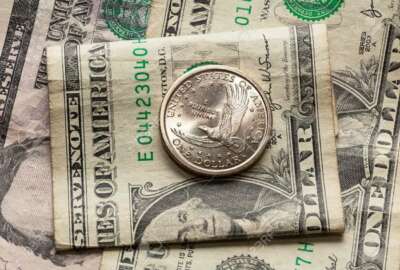
Magic number$ for feds, retirees: 1.6, 5.2, 2.6, 3.1
Federal workers and retirees are awash in numbers today, some solid, some still forming up. The final total will determine in large part what kind of financial...
Federal workers and retirees are awash in numbers today, some solid, some still forming up.
The final total will determine in large part what kind of financial future they have — as in how much money they will have to spend in 2020, the eventual size of their federal retirement benefit and how much more, if anything, they will have to pay for health insurance coverage in 2020.
Here are the numbers at play:
- 1.6% cost of living adjustment: The pending January COLA of 1.6% is fixed — solid. You can (almost) take it to the bank! The COLA is the amount of the keep-pace-with-inflation catch-up for current federal, military and Social Security retirees. They will see it in their higher monthly benefit starting with the payment they get in January.
- 5.2% on health premiums: The number is the average increase by which federal health premiums are going up next year in the Federal Employees Health Benefits program.
- 2.6% and 3.1% pay raise wild card numbers: These are the percentage pay raises that have been proposed by President Donald Trump — the former being an across-the-board pay raise for white collar civil servants — and/or approved by the House — the latter. If 3.1% is the final number, workers nationwide would get the same 2.6% increase while their colleagues in high-wage locality areas such as Washington, D.C., New York City, San Francisco, Los Angeles, Dallas, Chicago, etc., would get a locality adjustment that would exceed 3.1%.
Confused? Welcome to the federal numbers game.
Increases for retirees are based on the rise in living costs as measured by the Labor Department’s Bureau of Labor Statistics. The COLAs are a key component in the economy because they go to people who get Social Security, which includes about one in every six Americans. Big COLAs are nearly always welcome even though they are a reflection of (usually) higher prices for most goods and services.
Early in the year Trump called for a federal pay freeze in 2020, and in its place he proposed a system to give targeted, and presumably larger raises to individual civil servants based on performance and merit. But he later surprised lots of people by proposing the 2.6% raise after the Democratic-controlled House okay’d a higher 3.1% adjustment, and a group of pro-fed members began pushing for a very long shot 3.6%. This year federal workers got a 1.6% combined pay raise and locality adjustment.
Retirees under the old Civil Service Retirement System got a 2.9% COLA in January. Those under the Federal Employees Retirement System who are 62 years or older got 2% because of the diet-COLA provision in their retirement package.
The 2020 COLA for both CSRS and FERS retirees will be the same: 1.6%.
Many feds and retirees are unhappy that the “average” FEHBP premium will rise 5.2%. This year the average was only 1.3% percent, but premium increases bounce all over the place. The Office of Personnel Management generally does an excellent job of negotiating premiums and benefit changes. But medical inflation almost always runs higher than the rest of the economy. Besides, the government will continue to pay the bulk of the total health premium — just over 70% — for most workers and retirees.
And FEHBP members will have an open season from mid-November to early December when they can shop around for a comparable health plan with lower premiums than they now pay. Some of the 20 to 30 available health plans are actually holding the line or reducing premiums. Health plan expert Walton Francis said many people can save $1,000 to $2,000 next year in premiums if they take time to shop around.
For some tips on savings, check out Tuesday’s column.
Nearly Useless Factoid
By Amelia Brust
The first video game is thought to be Tennis for Two, a simple two-player game similar to Pong, which was created years later. Tennis for Two was developed in October 1958 by physicist William Higinbotham, who worked at Brookhaven National Laboratory in the instrumentation group. For the lab’s annual visitors’ days, Higinbotham was responsible for creating an exhibit to show off the division’s work, and though an interactive game would be more interesting. He designed it in a few hours, and technician Robert Dvorak spent about two weeks building the device. Players could turn a knob to adjust the angle of a bouncing ball, and push a button to hit the ball towards the other player. If they hit it at the wrong time or hit it at the wrong angle, the ball wouldn’t make it over the net. Tennis for Two proved to be an instant success.
Source: American Physical Society
Copyright © 2025 Federal News Network. All rights reserved. This website is not intended for users located within the European Economic Area.
Mike Causey is senior correspondent for Federal News Network and writes his daily Federal Report column on federal employees’ pay, benefits and retirement.
Follow @mcauseyWFED




